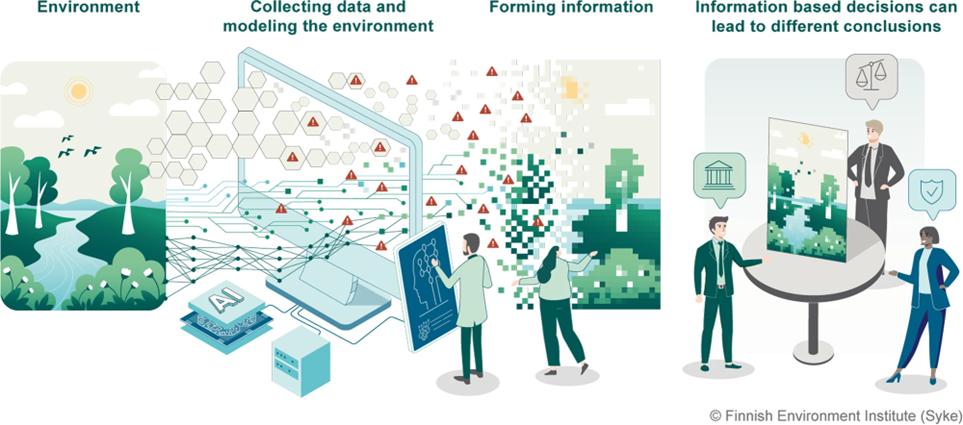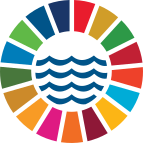Source-to-sea integrated modelling framework for planning and executing science-based measures and actions for remediation of coastal waters
Finnish environment Institute (Syke)
(
Government
)
#OceanAction58749
Description
Syke is committed to the development of a Source-to-Sea (S2S) assessment and simulation tool built upon an integrated modelling framework. It combines the Finnish national watershed simulation model—WSFS-Vemala https://www.syke.fi/en/services/modeling/water-and-marine-modelling/vem…, which integrates hydrological processes with nutrient loading and source apportionment—with the Finnish coastal nutrient loading model - FICOS (https://www.syke.fi/en/services/modeling/water-and-marine-modelling/fin…). The framework captures the full continuum from inland catchments to coastal waters. The integrated modelling system supports science-based planning and decision-making for national and regional authorities. It enables the identification, evaluation, and prioritization of actions aimed at reducing eutrophication and nutrient inputs originating from upstream catchment areas or from coastal and marine areas. This comprehensive framework serves as a strategic tool for planning holistic coastal water quality remediation. To ensure long-term effectiveness and adaptability, the framework includes and utilizes monitoring programs, iterative model updates based on new data and knowledge, and active stakeholder engagement. Effective governance underpins the success of the source-to-sea approach. The framework encourages multi-level coordination among national, regional, and local authorities to align policies and regulations.
The S2S modelling system is used e.g. to identify optimal locations for aquaculture and fish farms in coastal waters, aiming to minimize environmental impacts. Additionally, it is used to simulate and assess the site-specific environmental effects of individual fish farms—such as nutrient dispersion and sediment accumulation. This enables regulators and planners to evaluate compliance with environmental targets and implement mitigation measures tailored to local ecological conditions.
The effectiveness of local and international (such as Baltic Sea Action Plan of the Baltic Marine Environment Protection Commission HELCOM) nutrient pollution mitigation efforts in improving water quality in the coastal waters has been assessed. Scenario-based 'what-if' analyses have been conducted to evaluate the long-term impacts of various nutrient abatement strategies at the sea basin scale. For future nutrient inputs, we will apply the open sea nutrient input scenarios from the watershed and within the coastal zone, in collaboration with several partners.
Finnish Environment Institute Syke (Government)
Ministry of the Environment Finland (Government)
Ministry of the Agriculture and forestry Finland (Government)
Natural Resources Institute Finland Luke (Government)
Finnish meteorological institute FMI (Government)
University of Helsinki (Academic Institution)
Åbo Akademi University Environmental and Marine Biology (Academic institution)
SDGS & Targets
Goal 6
Ensure availability and sustainable management of water and sanitation for all
6.1
By 2030, achieve universal and equitable access to safe and affordable drinking water for all
6.1.1
Proportion of population using safely managed drinking water services
6.2
By 2030, achieve access to adequate and equitable sanitation and hygiene for all and end open defecation, paying special attention to the needs of women and girls and those in vulnerable situations
6.2.1
Proportion of population using (a) safely managed sanitation services and (b) a hand-washing facility with soap and water
6.3
By 2030, improve water quality by reducing pollution, eliminating dumping and minimizing release of hazardous chemicals and materials, halving the proportion of untreated wastewater and substantially increasing recycling and safe reuse globally
6.3.1
Proportion of domestic and industrial wastewater flows safely treated
6.3.2
Proportion of bodies of water with good ambient water quality
6.4
6.4.1
Change in water-use efficiency over time
6.4.2
Level of water stress: freshwater withdrawal as a proportion of available freshwater resources
6.5
By 2030, implement integrated water resources management at all levels, including through transboundary cooperation as appropriate
6.5.1
Degree of integrated water resources management
6.5.2
Proportion of transboundary basin area with an operational arrangement for water cooperation
6.6
6.6.1
Change in the extent of water-related ecosystems over time
6.a
6.a.1
Amount of water- and sanitation-related official development assistance that is part of a government-coordinated spending plan
6.b
Support and strengthen the participation of local communities in improving water and sanitation management
6.b.1
Proportion of local administrative units with established and operational policies and procedures for participation of local communities in water and sanitation management
Goal 15
Protect, restore and promote sustainable use of terrestrial ecosystems, sustainably manage forests, combat desertification, and halt and reverse land degradation and halt biodiversity loss
15.1
By 2020, ensure the conservation, restoration and sustainable use of terrestrial and inland freshwater ecosystems and their services, in particular forests, wetlands, mountains and drylands, in line with obligations under international agreements
15.1.1
15.1.2
15.2
By 2020, promote the implementation of sustainable management of all types of forests, halt deforestation, restore degraded forests and substantially increase afforestation and reforestation globally
15.2.1
15.3
By 2030, combat desertification, restore degraded land and soil, including land affected by desertification, drought and floods, and strive to achieve a land degradation-neutral world
15.3.1
15.4
By 2030, ensure the conservation of mountain ecosystems, including their biodiversity, in order to enhance their capacity to provide benefits that are essential for sustainable development
15.4.1
15.4.2
15.5
Take urgent and significant action to reduce the degradation of natural habitats, halt the loss of biodiversity and, by 2020, protect and prevent the extinction of threatened species
15.5.1
15.6
Promote fair and equitable sharing of the benefits arising from the utilization of genetic resources and promote appropriate access to such resources, as internationally agreed
15.6.1
15.7
Take urgent action to end poaching and trafficking of protected species of flora and fauna and address both demand and supply of illegal wildlife products
15.7.1
15.8
By 2020, introduce measures to prevent the introduction and significantly reduce the impact of invasive alien species on land and water ecosystems and control or eradicate the priority species
15.8.1
15.9
By 2020, integrate ecosystem and biodiversity values into national and local planning, development processes, poverty reduction strategies and accounts
15.9.1
(a) Number of countries that have established national targets in accordance with or similar to Kunming-Montreal Global Biodiversity Framework Target 14 in their national biodiversity strategy and action plans and the progress reported towards these targets; and (b) integration of biodiversity into national accounting and reporting systems, defined as implementation of the System of Environmental-Economic Accounting
15.a
Mobilize and significantly increase financial resources from all sources to conserve and sustainably use biodiversity and ecosystems
15.a.1
(a) Official development assistance on conservation and sustainable use of biodiversity; and (b) revenue generated and finance mobilized from biodiversity-relevant economic instruments
15.b
Mobilize significant resources from all sources and at all levels to finance sustainable forest management and provide adequate incentives to developing countries to advance such management, including for conservation and reforestation
15.b.1
(a) Official development assistance on conservation and sustainable use of biodiversity; and (b) revenue generated and finance mobilized from biodiversity-relevant economic instruments
15.c
Enhance global support for efforts to combat poaching and trafficking of protected species, including by increasing the capacity of local communities to pursue sustainable livelihood opportunities
15.c.1
SDG 14 targets covered
| Name | Description |
|---|
Deliverables & Timeline
Resources mobilized
Partnership Progress

Feedback
Action Network

Timeline
Entity
Other beneficiaries
Ocean Basins
Communities of Ocean Action
More information
Countries
Headquarters
Contact Information
Niina, Group manager

